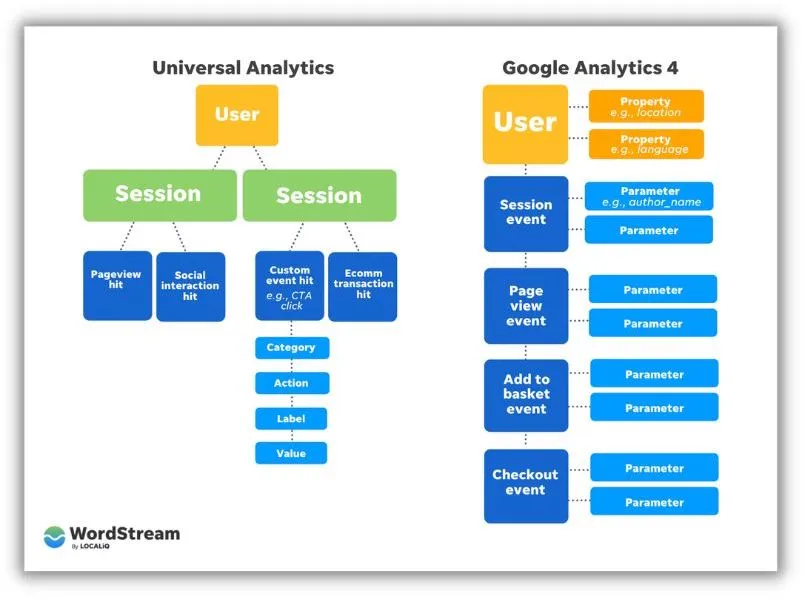Some Known Incorrect Statements About Google Analytics Event Tracking
What Does Google Analytics Event Tracking Mean?
Table of ContentsTop Guidelines Of Google Analytics Event TrackingGetting My Google Analytics Event Tracking To WorkThe Single Strategy To Use For Google Analytics Event TrackingA Biased View of Google Analytics Event TrackingA Biased View of Google Analytics Event TrackingSome Of Google Analytics Event Tracking
If you're going to establish up event tracking manually, after that you're mosting likely to need to include some additional code to the aspects you wish to gather data from. The code you're going to collaborate with will certainly look something similar to this: There are 4 parts within that code fragment that you're mosting likely to require to define yourself: event, Classification, event, Activity, occasion, Label and occasion, Value.
As you can see, two of these are required (classification and activity) while label and value are optional. Everything depends upon the kind of info you want passed on back to Google Analytics when a customer clicks on the defined component (Google Analytics Event Tracking). It will certainly be a lot easier to specify these elements if you analyse your web site and choose which elements/actions you want to track
Little Known Facts About Google Analytics Event Tracking.
Now, you'll be asked to define the and and you'll intend to select from the drop-down food selection that appears when you click. This will raise the same event monitoring components we checked out earlier, which you'll require to fill in. Once you have actually specified these, you can move down to the second box and pick the trigger that will discharge your tag.
On the next screen, you'll also have a field for naming your trigger and, if you click package, you'll see a checklist of the various triggers you can pick. In this instance, we wish to select and after that pick the option listed below. After that you'll establish the trigger to only terminate when an element is clicked with an URL which contains the.
Every website talks. Before data analytics, we could not hear the voices of our web sites. But how do you know what your website is claiming? Straightforward - Event tracking! Event tracking offers you an image of exactly how users engage with your web site and business (Google Analytics Event Tracking). Do you wish to know even more? Then, review on as we explore every little thing you need to know, including what it is, why you must track occasions, just how to take care of events information, and various other pertinent FAQs you might have.
Everything about Google Analytics Event Tracking
You can change between your event classifications, activities, and labels in the Leading Occasions report. This report is critical for excavating better right into research on a details event category. The Occasion Pages record presents the web pages where occasions are set off. In this area, we can examine the leading web pages that drive events.
Events in Google Analytics have 4 primary elements. Google Analytics uses these Go Here codes to track individual interactions and group them into occasion reports (Google Analytics Event Tracking).
Pick "Variables" > "Configure". A list of the criteria you can track on your internet site gets on the right. Under Clicks, Forms, and Videos, double-check each specification. After checking all needed areas, you can click "X" to shut the home window and return to the Review food selection on the.
The Single Strategy To Use For Google Analytics Event Tracking

Selecting "False" will certainly stop that session from being a bounce. If you haven't done so, you might need to establish up a variable in the Google Analytics Settings box. Click "New Variable ..." if you can't discover one to choose. Hereafter, enter your GA monitoring ID in the Monitoring ID field.
Your ID will get on top of the display. To do this, comply with the next collection of activities: After configuring the areas, choose the "Triggering" area. When configuring your new trigger, click the "+" switch, then the "pencil" button, then select your trigger kind. Label your trigger and define the conditions that bring about cause firing.
6 Easy Facts About Google Analytics Event Tracking Explained

When it familiarizes which sections and elements are directing customers via your conversion channel, you still will not recognize. So, without event monitoring, GA reports will only count brows through as single-page sessions, also if customers invest a lot of time on one page and involve with it significantly (and a bounce).
Just how does event monitoring accomplish this?Single-page sessions recognized as bounces start and end on the exact same page. Without occasion monitoring, GA will certainly categorize a user's visit as a bounce if they do not navigate to one more page, no matter of exactly how they interact with it. A video-rich web page can have a greater bounce price if occasions are not tracked.
What Does Google Analytics Event Tracking Mean?
For GA to take occasion hits right into account when gauging bounce rates, you should pick "Non-interaction event" as "False" during the GTM configuration. Establishing "occasion objectives" with event action is a superb means to keep track of user activities you value extremely, such as brand-new lead entries or click a telephone call to activity.